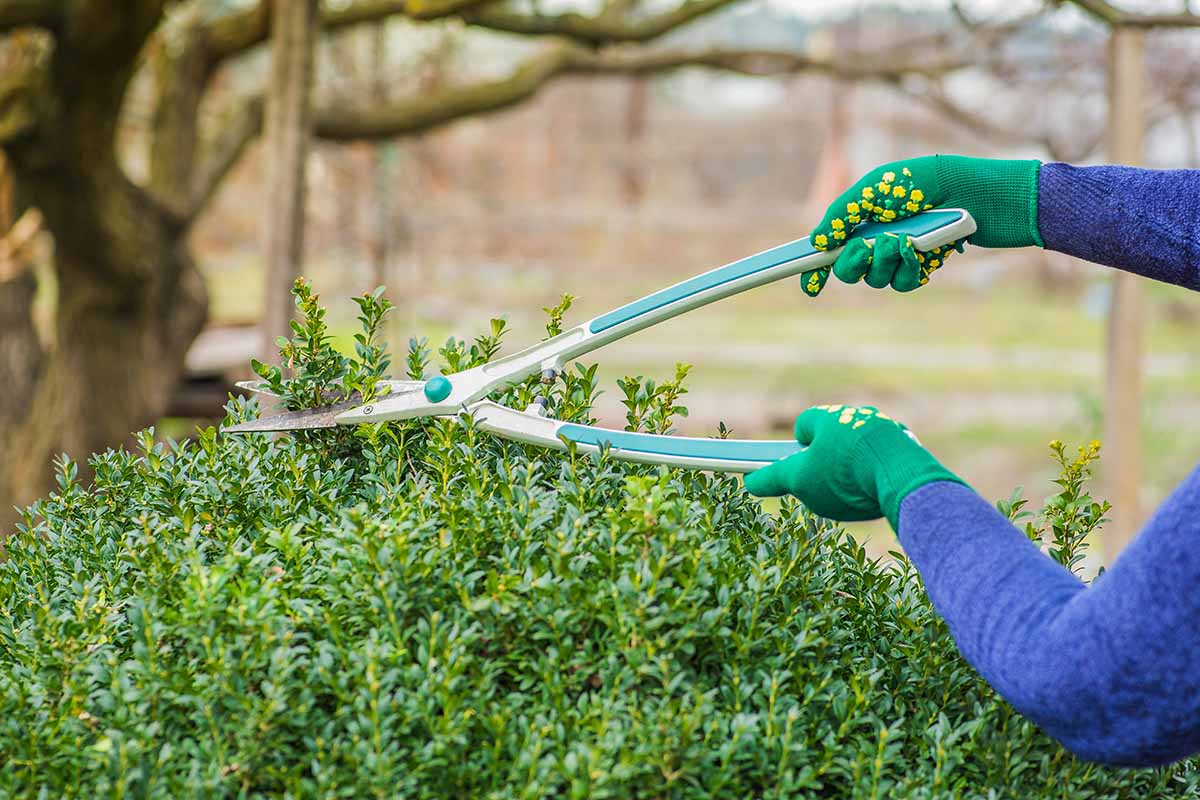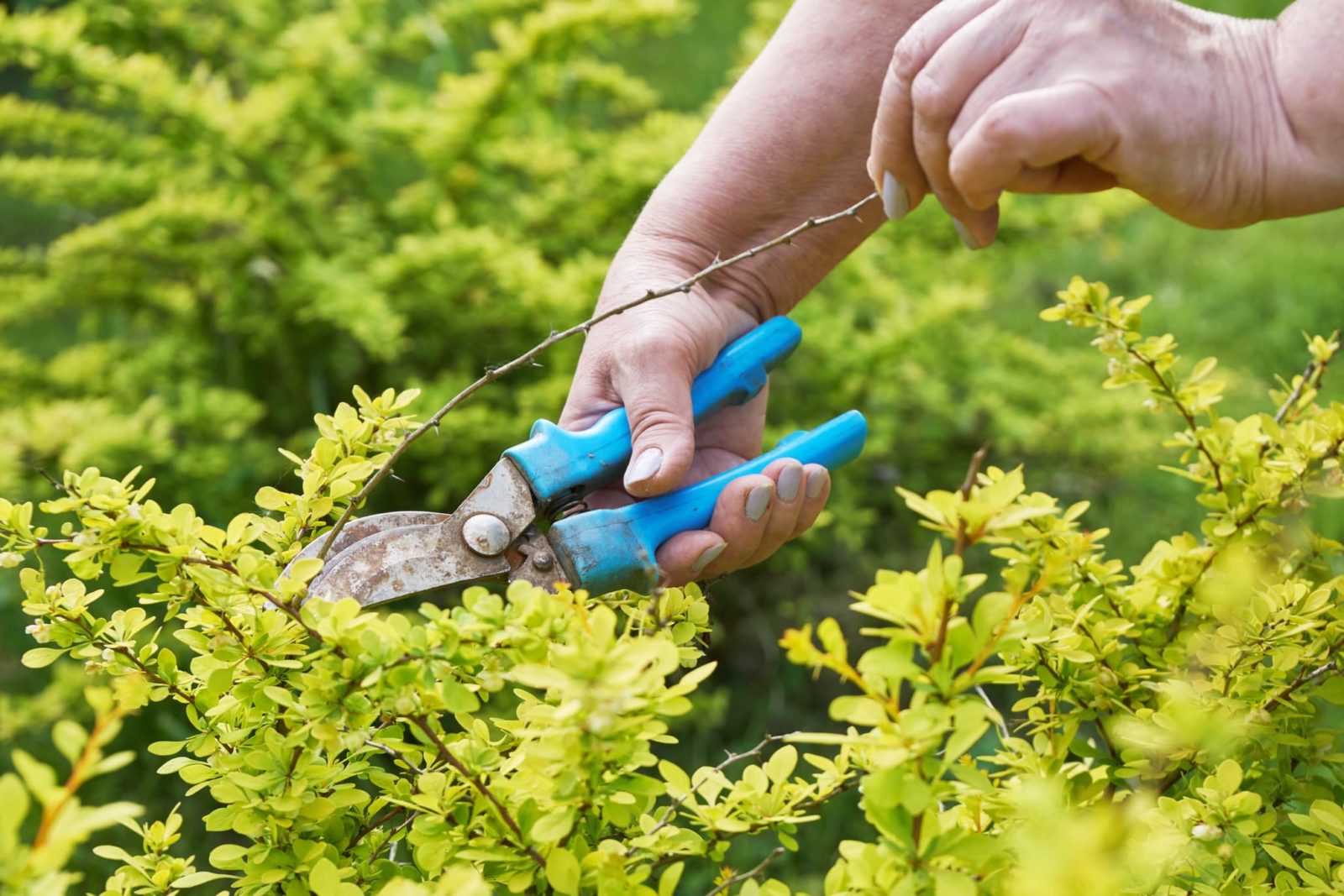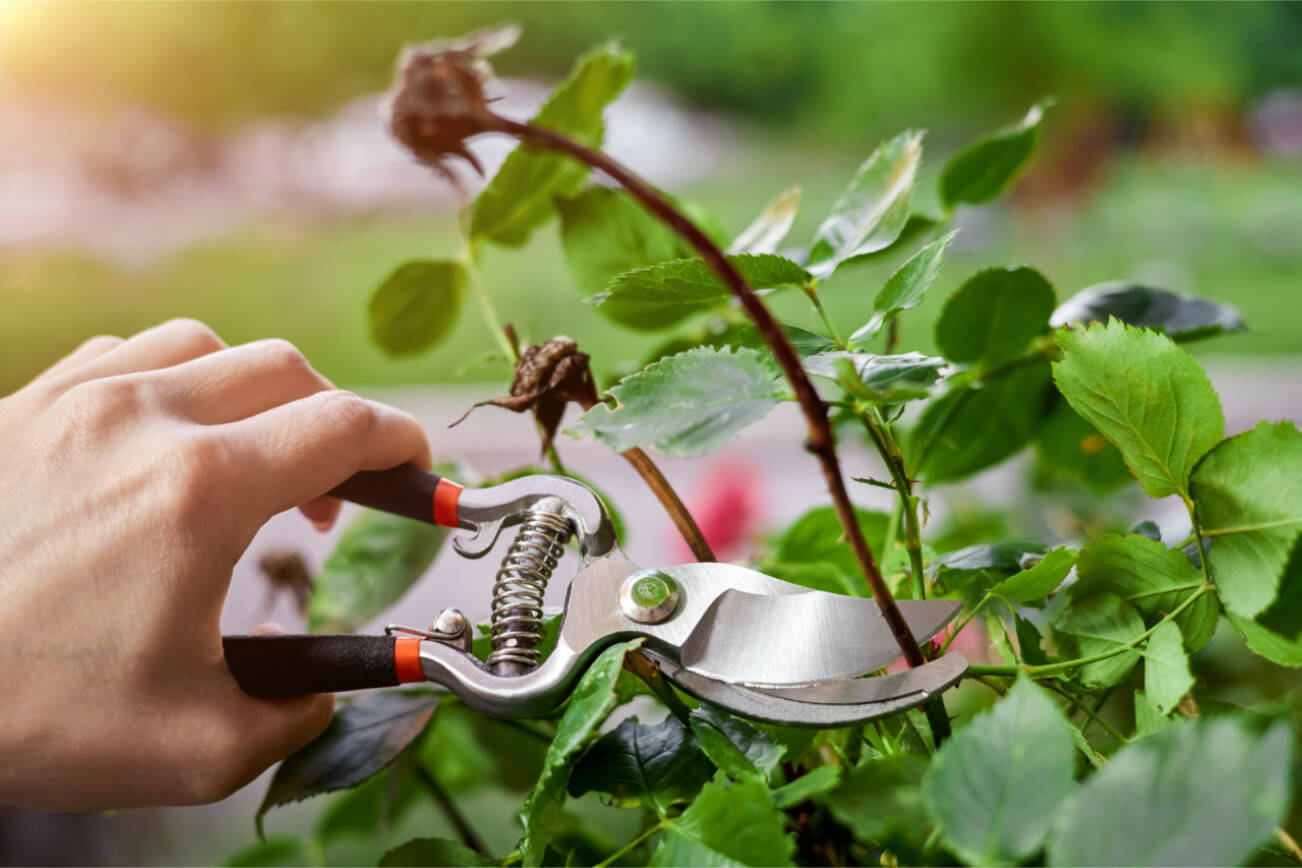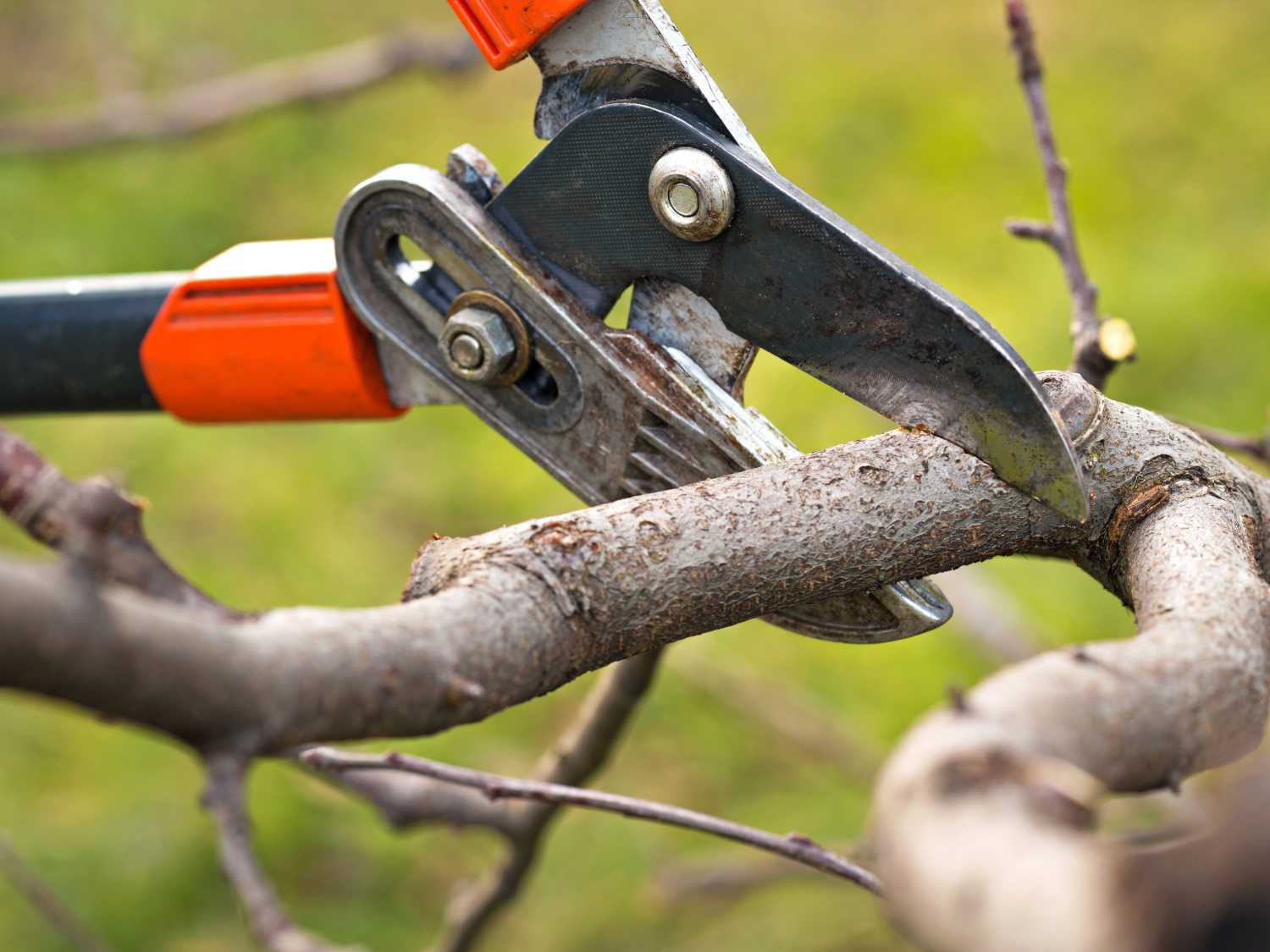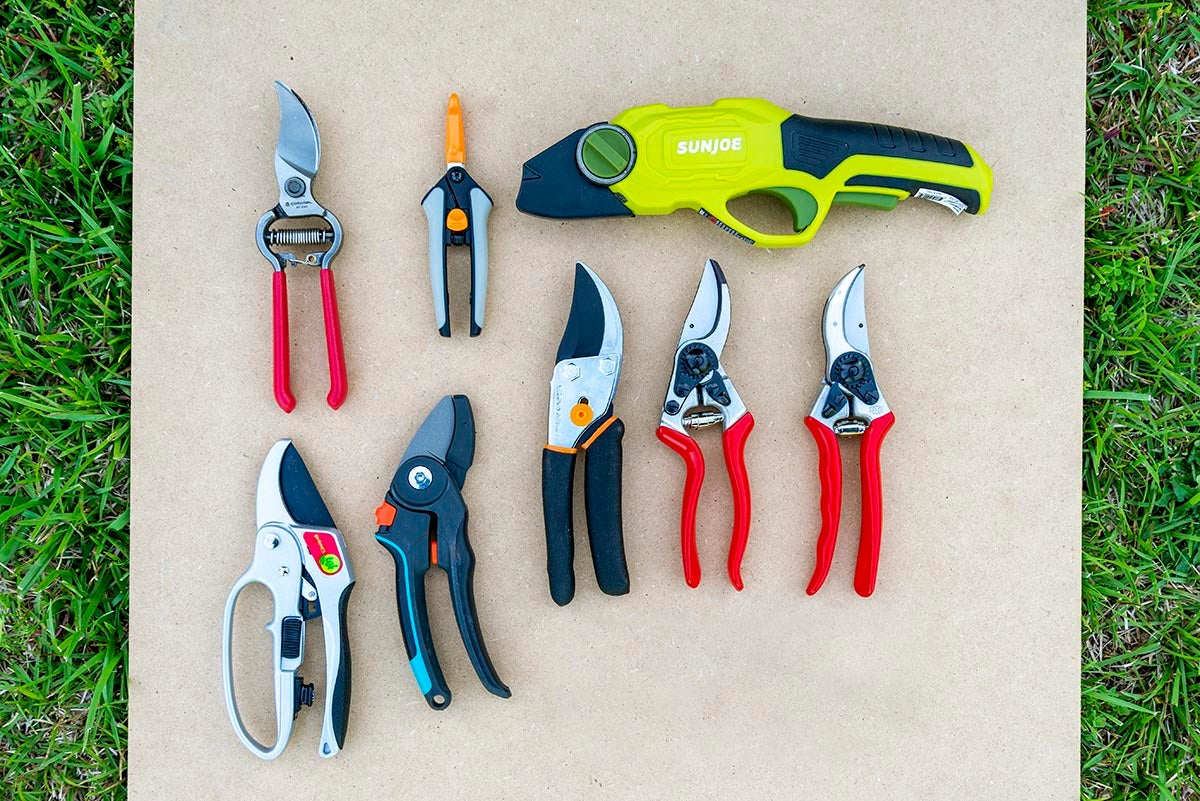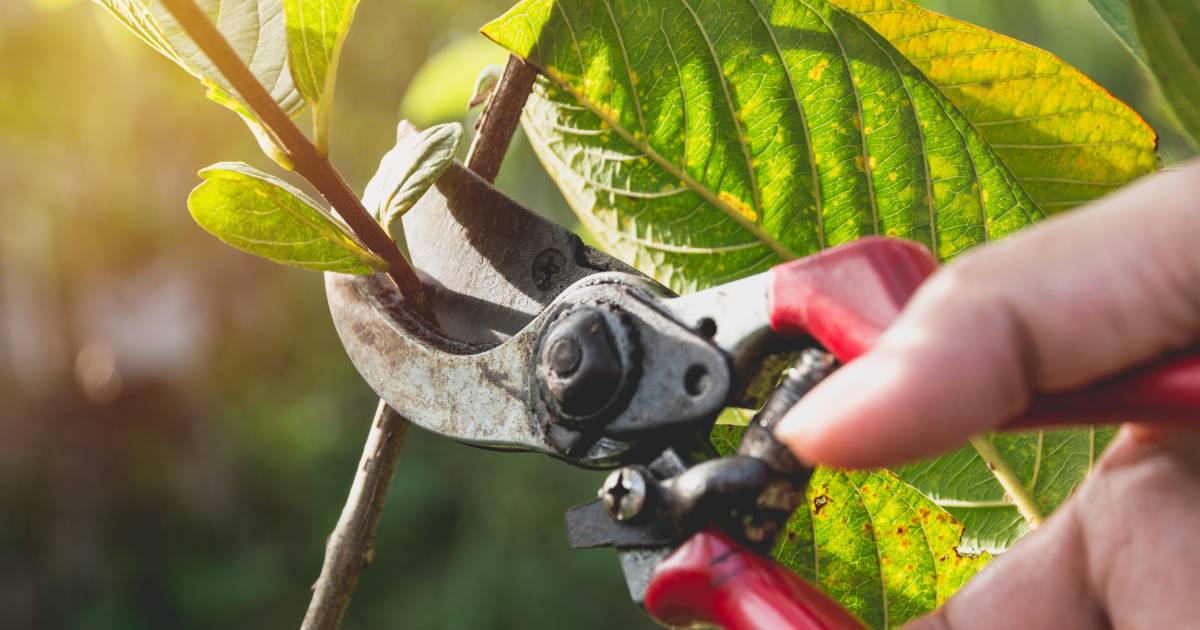Home>Types of Gardening>Ornamental Gardening>What Is The Best Tool To Cut Large Branches When Pruning Shrubs That Are Hard To Reach?


Ornamental Gardening
What Is The Best Tool To Cut Large Branches When Pruning Shrubs That Are Hard To Reach?
Modified: January 22, 2024
Discover the best tool for pruning hard-to-reach shrubs and cutting large branches in ornamental gardening. Achieve precise cuts with ease.
(Many of the links in this article redirect to a specific reviewed product. Your purchase of these products through affiliate links helps to generate commission for Chicagolandgardening.com, at no extra cost. Learn more)
Table of Contents
- Introduction
- Importance of Pruning Shrubs
- Challenges of Cutting Large Branches on Hard-to-Reach Shrubs
- Factors to Consider When Choosing a Tool for Cutting Large Branches on Hard-to-Reach Shrubs
- Comparison of Different Tools for Cutting Large Branches on Hard-to-Reach Shrubs
- Recommended Tool for Cutting Large Branches on Hard-to-Reach Shrubs
- Conclusion
Introduction
Welcome to the world of ornamental gardening, where every plant is a work of art and every garden a masterpiece. Ornamental gardening is the art of cultivating and arranging plants for aesthetic purposes, creating beautiful outdoor spaces that delight the senses. One of the key aspects of maintaining a breathtaking ornamental garden is proper pruning and trimming of shrubs.
In an ornamental garden, shrubs play a vital role in providing structure, visual interest, and a sense of maturity to the landscape. However, shrubs, if left unpruned, can quickly become unruly, overgrown, and lose their appeal. Pruning is essential to shape and maintain the health of shrubs, allowing them to thrive and showcase their unique beauty.
When it comes to pruning shrubs, certain challenges arise, especially when dealing with large branches and hard-to-reach areas. It can be daunting to tackle overgrown shrubs with branches that seem out of control or hidden in tight spaces. This is where having the right tool for cutting large branches on hard-to-reach shrubs becomes essential.
In this article, we will explore the importance of pruning shrubs, highlight the challenges of cutting large branches on hard-to-reach shrubs, discuss the factors to consider when choosing a tool for this task, compare different tools available, and ultimately recommend the best tool to cut large branches in those hard-to-reach areas.
Whether you are a seasoned gardener looking to upgrade your pruning tools or a beginner seeking advice on how to tackle challenging pruning tasks, this article will provide you with the guidance you need to achieve stunning results in your ornamental garden.
Importance of Pruning Shrubs
Pruning shrubs is not just about aesthetics; it is a vital practice that promotes the health, longevity, and overall beauty of ornamental gardens. Here are some key reasons why pruning shrubs is important:
- Promotes Healthy Growth: Pruning removes dead, damaged, or diseased branches, allowing the shrub to allocate its resources to healthy branches and new growth. By eliminating what is no longer serving the plant, pruning stimulates healthy growth and helps maintain the plant’s overall vitality.
- Enhances Plant Appearance: Pruning helps shape shrubs, giving them a clean and well-maintained appearance. By removing excessive growth and maintaining a balanced structure, pruning allows the shrub to showcase its natural beauty and unique form.
- Controls Size and Spread: Certain shrubs tend to grow rapidly and can quickly overtake a garden if left unchecked. Pruning helps control the size and spread of shrubs, preventing them from encroaching on other plants or structures within the garden. This ensures a well-manicured and organized landscape.
- Encourages Flowering and Fruit Production: Proper pruning techniques can have a significant impact on a shrub’s flowering and fruiting capabilities. By selectively removing branches that are inhibiting flower and fruit development, pruning promotes abundant blooms and bountiful harvests.
- Improves Air Circulation and Sunlight Penetration: Dense, overgrown shrubs can restrict airflow and prevent sunlight from reaching all parts of the plant. Pruning opens up the shrub, allowing for better air circulation and sunlight penetration. This reduces the risk of diseases, improves photosynthesis, and encourages healthy growth throughout the shrub.
Regular pruning is a fundamental aspect of ornamental gardening, enabling shrubs to reach their full potential and maintain their health and beauty over time. By understanding the importance of pruning, gardeners can prioritize this essential practice and reap the rewards of an exquisite ornamental garden.
Challenges of Cutting Large Branches on Hard-to-Reach Shrubs
When it comes to pruning shrubs, cutting large branches on hard-to-reach shrubs poses a unique set of challenges. Here are some common difficulties faced when tackling this task:
- Limited Access: Hard-to-reach shrubs are often tucked away in tight corners, against walls, or surrounded by other plants. This limited access makes it challenging to maneuver pruning tools and reach the branches that require cutting.
- Height and Reach: Some shrubs may have branches that extend high above ground level or stretch horizontally in distant areas. This height and reach can make it difficult for gardeners to safely access the branches and effectively trim them.
- Branch Thickness: Large branches on shrubs can be sturdy and thick, requiring a tool that can handle the cutting power needed. Without the right tool, gardeners may struggle to trim these thicker branches effectively.
- Pruning Accuracy: Maintaining precision and accuracy while cutting large branches can be challenging, especially in hard-to-reach areas. Without clear visibility or proper tools, the risk of accidental damage to the shrub or surrounding plants increases.
- Safety Hazards: Pruning in hard-to-reach areas can pose safety hazards. Uneven ground, unstable positioning, or using inadequate tools can lead to accidents, injuries, or damage to the gardener or the plants themselves.
These challenges can deter gardeners from effectively pruning large branches on hard-to-reach shrubs. However, with the right tool and approaches, these obstacles can be overcome, allowing for successful pruning and maintenance of the shrub’s health and appearance.
Factors to Consider When Choosing a Tool for Cutting Large Branches on Hard-to-Reach Shrubs
Choosing the right tool for cutting large branches on hard-to-reach shrubs is crucial to ensure efficient and safe pruning. Here are some factors to consider when selecting the tool:
- Size and Thickness of Branches: Assess the size and thickness of the branches you frequently encounter in your shrubs. This will help determine the cutting capacity needed in a tool. For larger branches, you will require a tool with sufficient power and cutting capacity.
- Length and Reach: Consider the height and reach required to access the hard-to-reach branches of your shrubs. Choose a tool with an extended handle or adjustable features that allow you to safely reach those areas without additional risks.
- Tool Weight and Maneuverability: The weight and maneuverability of the tool play a significant role in ensuring ease of use and reducing fatigue during pruning. Opt for lightweight tools that provide comfortable grip and control, especially when navigating through tight spaces.
- Safety Features: Look for safety features such as blade locks and ergonomic handles that provide enhanced protection during pruning activities. These features can minimize the risk of accidents and injuries while working on hard-to-reach shrubs.
- Cutting Mechanism: Evaluate different cutting mechanisms, such as bypass, anvil, or ratchet systems, based on your specific pruning needs. Each mechanism has its advantages, so select one that suits your cutting style and the requirements of your shrubs.
- Quality and Durability: Invest in a high-quality tool that is built to withstand the rigors of cutting large branches on hard-to-reach shrubs. Durable materials and construction ensure longevity, providing you with a reliable tool for future pruning tasks.
By considering these factors, you can narrow down your options and choose a tool that is well-suited for cutting large branches on hard-to-reach shrubs. Remember, selecting the right tool is essential for a successful pruning experience and maintaining the health and beauty of your ornamental garden.
Comparison of Different Tools for Cutting Large Branches on Hard-to-Reach Shrubs
When it comes to cutting large branches on hard-to-reach shrubs, several tools are available to help you tackle this challenging task. Let’s compare some of the most common tools used for pruning:
- Pole Pruners: Pole pruners consist of a long pole with a pruning blade at the end. They are ideal for reaching high branches without the need for a ladder. Pole pruners come in manual or powered versions, with powered options providing more cutting power.
- Loppers: Loppers are long-handled pruning shears with thick, sturdy blades. They are designed to cut through thicker branches with better leverage and reach. Loppers are available in various sizes and options, including bypass, anvil, or ratchet systems.
- Pruning Saws: Pruning saws have a curved or straight blade with larger teeth designed for cutting through thicker branches. They are useful for branches that are too thick for loppers or pole pruners. Pruning saws can be handheld or attachable to extension poles for better reach.
- Cordless or Electric Chainsaws: Cordless or electric chainsaws offer more power and cutting capacity, making them suitable for larger branches. They provide easier handling than gas-powered chainsaws and are often lighter in weight, making them more maneuverable for hard-to-reach areas.
- Telescopic Hedge Shears: Telescopic hedge shears are designed for trimming and shaping shrubs with thinner branches. They have long handles that can be extended for better reach. While not suitable for thicker branches, they work well for maintaining shrub aesthetics.
Each tool has its unique advantages and considerations, depending on the specific pruning needs of your shrubs. Consider factors such as branch thickness, reach requirements, maneuverability, and cutting capacity when making your decision.
It is important to note that personal preference and comfort play a significant role in selecting the right tool. Testing and experiencing different tools can help you determine which one feels most comfortable and suits your pruning style.
Ultimately, the best tool for cutting large branches on hard-to-reach shrubs is the one that meets your specific requirements, offers ease of use, ensures safety, and provides optimal cutting performance for achieving desired pruning results.
Recommended Tool for Cutting Large Branches on Hard-to-Reach Shrubs
After careful consideration and evaluation, the recommended tool for cutting large branches on hard-to-reach shrubs is the pole pruner.
Pole pruners offer several advantages that make them well-suited for this task. Firstly, they provide an extended reach, allowing you to access high branches without the need for a ladder. This feature ensures safety and stability while navigating hard-to-reach areas.
Additionally, pole pruners are available in both manual and powered versions, providing flexibility based on your needs and preferences. Manual pole pruners are lightweight and easy to handle, making them suitable for smaller branches. Powered pole pruners, on the other hand, offer more cutting power, allowing you to handle larger branches with ease.
The versatility of pole pruners is another key factor in their recommendation. Many models come with interchangeable cutting heads, such as pruning blades or saws, enabling you to adapt to different branch thicknesses and pruning requirements. This flexibility ensures that you can efficiently tackle a wide range of pruning tasks in your garden.
When selecting a pole pruner, consider the length and weight of the pole. Ensure that it is adjustable and lightweight enough for comfortable use. Look for durable construction, a secure locking mechanism, and a sharp cutting blade for optimal performance.
It is worth mentioning that while pole pruners are highly effective for cutting large branches on hard-to-reach shrubs, they may not be suitable for extremely thick branches. In such cases, a pruning saw or cordless chainsaw might be a better choice.
Remember, the right tool selection ultimately depends on your specific pruning needs, including branch thickness, reach requirements, and personal comfort. It is recommended to try out different tools and assess their performance before making a final decision.
By investing in a high-quality pole pruner and mastering its use, you’ll be equipped with the ideal tool to efficiently and safely trim large branches on hard-to-reach shrubs, ensuring the health and aesthetic appeal of your ornamental garden.
Conclusion
Pruning shrubs is an essential practice in ornamental gardening, contributing to the overall health and beauty of your outdoor space. When it comes to cutting large branches on hard-to-reach shrubs, choosing the right tool is crucial for a successful pruning experience.
Throughout this article, we discussed the importance of pruning shrubs and the challenges involved in cutting large branches on hard-to-reach shrubs. We also explored the factors to consider when selecting a tool for this task and compared various options available, such as pole pruners, loppers, pruning saws, cordless chainsaws, and telescopic hedge shears.
After careful evaluation, our recommended tool for cutting large branches on hard-to-reach shrubs is the pole pruner. With its extended reach, adaptability, and versatility, it provides an efficient solution to tackle pruning tasks in hard-to-reach areas. However, it is important to consider the specific needs of your shrubs and personal preferences before making a final decision.
Remember to prioritize safety while pruning, especially in hard-to-reach areas. Wear appropriate protective gear, assess the stability of your surroundings, and ensure the tool you choose has safety features such as blade locks and ergonomic handles.
By investing in the right tool and mastering pruning techniques, you can effectively shape and maintain the health of your shrubs, enhancing the aesthetic appeal of your ornamental garden. Regular pruning not only promotes healthy growth but also controls the size and spread of shrubs, encourages flowering and fruit production, and improves air circulation and sunlight penetration.
Whether you are a seasoned gardener or just starting out, incorporating proper pruning techniques and utilizing the recommended tool will facilitate the creation of a stunning ornamental garden that you can enjoy for years to come.

